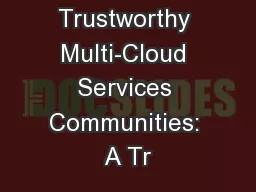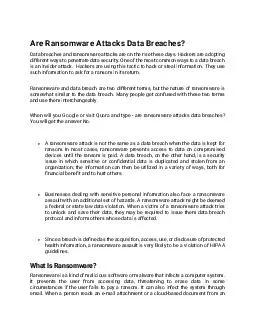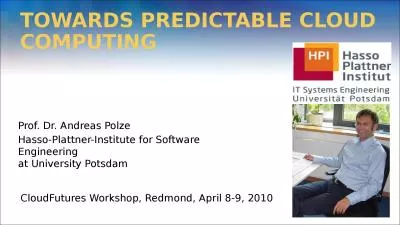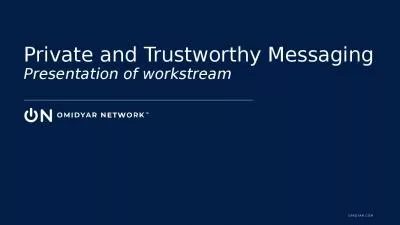PPT-Towards Trustworthy Multi-Cloud Services Communities: A Tr
Author : lois-ondreau | Published Date : 2018-01-11
presented by Andreea Sistrunk amp Josh Southward Presentation Overview Andreea Josh Problem Definition Related Work Service Discovery Trust Establishment System
Presentation Embed Code
Download Presentation
Download Presentation The PPT/PDF document "Towards Trustworthy Multi-Cloud Services..." is the property of its rightful owner. Permission is granted to download and print the materials on this website for personal, non-commercial use only, and to display it on your personal computer provided you do not modify the materials and that you retain all copyright notices contained in the materials. By downloading content from our website, you accept the terms of this agreement.
Towards Trustworthy Multi-Cloud Services Communities: A Tr: Transcript
Download Rules Of Document
"Towards Trustworthy Multi-Cloud Services Communities: A Tr"The content belongs to its owner. You may download and print it for personal use, without modification, and keep all copyright notices. By downloading, you agree to these terms.
Related Documents














